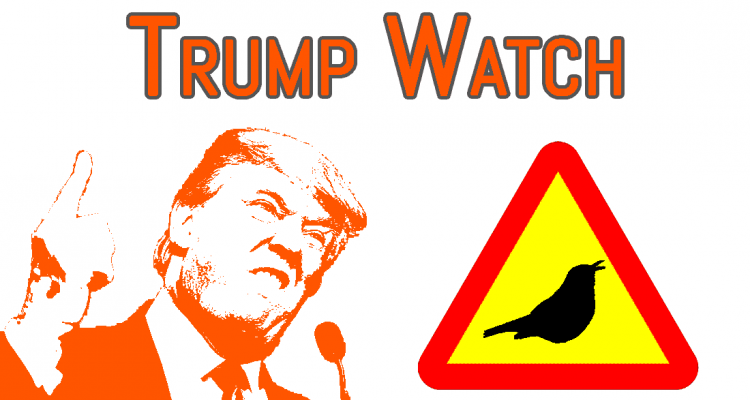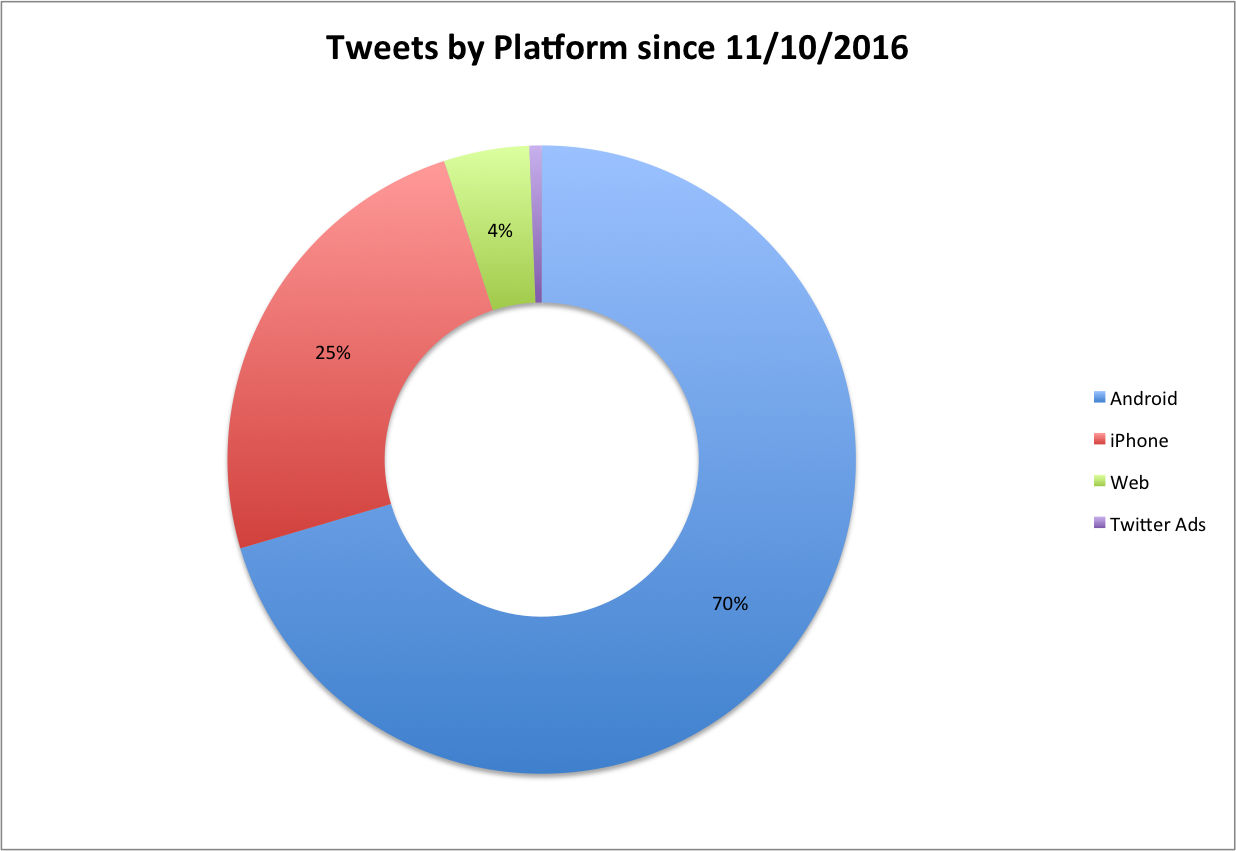By: Richard W. Sharp & Patrick W. Zimmerman
Words have power and power has consequences. As president-elect, Donald Trump’s stream-of-tweet approach to international relations assumes a gravity it lacked in the heyday of the campaign. Now, when he hurls insults… or decides that the One-China Policy is less important than bragging… the targets include countries with a nuclear arsenal.
Slights, perceived or real, cause a response. To bring attention to the threat encapsulated in 140 characters, we are introducing the Trump Watch, our effort to track the behavior of the soon-to-be-president, on his preferred channel. The Watch that now appears in the sidebar and on the main page will become a standard feature of the site, populated with up-to-date numbers representing the current state of tweets.
The principal measure to pay attention to is the Doomsday Counter (baby brother to the Doomsday Clock), in which we capture the net animus displayed toward nuclear states via tweet. To do this, we have collected the tweets of @realDonaldTrump since just after the election (November 10, 2016) and determined whether the tweet represents an insult or compliment. In contrast with sentiment, which has to do with the intent of the author, we define an insult by how a statement’s target perceives it.
The Upshot (run by frequent Trump target the New York Times) launched a similar effort early in 2016 that recently culminated in an accounting of all the targets of Trump’s insults hurled from the aerie of the Twitterverse. Whereas the NYT effort focused inward on the mind of the Donald, the Doomsday Counter looks outward, and tries to gauge the temperature of the nuclear cauldron as represented by the net number of insults (negative) and compliments (positive) paid to nuclear states other than the USA: China, France, India, Israel, Pakistan, North Korea, Russia, and the United Kingdom. We’ll also include Iran in that list, in light of their perceived ability to attain a bomb.
The inauguration is more than a month away. The counter is not at zero.
Early reactions
1 – Trade and job fears are bigger targets than terrorism right now
While campaign rhetoric swirled around the threat posed by groups like ISIS, tweets tend to track the news cycle. Over the last few weeks that means international policy has been restricted mainly to congratulatory phone calls from work leaders and the resulting fallout. Presumably ISIS has not tried to give him a call. On the other hand, Saudi Arabia has.
So despite the focus of his campaign, Mr. Trump did not see fit to upend that tricky relationship (an empty threat to restrict oil imports is not the same as a restructuring an uneasy military alliance) and instead turned his gaze east, going straight after One-China.
One promise kept, however, has been the belittlement of Mexico. Do business there and he will come after you.
2 – Trump is easily provoked, but has avoided an obvious target, Russia
Mr. Trump is quick to respond to a slight. When Chuck Jones said on CNN that he’d lied about the size of his success at Carrier it took all of twenty minutes to get a direct response. This was a case of retaliation for damaging criticism of a signature claim (no fewer than six tweets mention Carrier in addition to numerous other public statements).
The Taiwan situation was a little more drawn out. He took credit for the call from Taiwan on Friday, took flack for it (including a diplomatic protest from China) on Saturday, and took a swing at China on Sunday. Again though, the pattern of claim, criticism, and rapid response plays out.
It took two full days, however, for the president-elect to respond to a drumbeat of criticism in the form of the CIA’s assessment that Russia interfered with the U.S. election in order to have him elected. True to his pattern, he attacked the messenger that delivered the bad news, in this case the CIA. His only statements about Russia itself have been neutral. While he has been quick to attack some of the creative fictions embraced by the U.S., it seems he is ready to institute some others on his own behalf. Russia, despite being opposed to US interests (such as free and fair elections at home or respect for the borders of allies abroad), has not committed the sin of personal criticism.
What else can we learn?
Of course the tweets contain more than just insults, and we will continue to collect and analyze the corpus during his tenure in the While House. After all, examining the entrails of the Tweet corpus to prophesy the future has ancient precedent. So what else is he talking about?
Shouldn’t he be sleeping more? Or doing things other than tweeting? For example, we can see that he typically tweets in the afternoon or late in the night.
Who’s actually tweeting what? During the campaign, it was noted that Trump’s tweets seem to come from two personas, an angry one on Android and a steadier hand with an iPhone. That hasn’t changed recently, at least, the use of both platforms as a source of many tweets is still the case as we can see below.
Methodological nitty and/or gritty
Doomsday Map and scoreboard –
Tweets were tagged if they had any mention of a state (or an implied mention, as long as it was specific), and additionally for sentiment (positive or negative) or insult (compliment or insult). Mentions scored a 0 on the counter, positive and negative statements were +/-1. Insults and compliments +/-2. Thus, the tweet below is tagged #StaTWN #SsnTWNPos #SinTWNCmp #StaCHN #StaCHNins:
Trump n-gram dashboard –
We used the Natural Language Toolkit, a free python 2.7 package, to parse Trump’s tweet texts into tokens, pruned out common English stopwords, conjunctions, and articles, and then manually linked some terms that were related in his tweets (Indiana, job, jobs, and Carrier, for example).
Time of day chart –
To determine the time of day, we assume that the timezone for all tweets is EST. While he has traveled recently, this has mainly been restricted to the east coast and cities in central time.
Data availability –
We are working to set up a suitable hosting solution and will make the data available there shortly.
Conclusion
There has been some serious debate on the left about the danger posed by a fascination with his tweeting habits to distract people from concrete acts like the naming of his cabinet. Indeed, we’re just now waking up to the consequences of a reality TV campaign, one heavy on scandals (never mind the details) and horse race coverage, and light on the issues. But his words matter, however superficial the platform may seem. Stocks tank and China rumbles when he lets loose. While we cannot lose focus on “real events”, neither should we discount the impact of 140 characters spilled out at 3am.



Coming soon in the next iteration of this: Sentiment analysis and TF-IDF of Trump’s favorite words / phrases compared to the Twitterverse as a whole and other politicans (Elizabeth Warren is also an active Twitterer, for example).
@rsharp, so “Words have power and power has consequences.” And so does flagrantly pissing off the People’s Republic of China. Congrats, Donald, you just single-handedly moved the actual Doomsday Counter a bit closer to midnight.